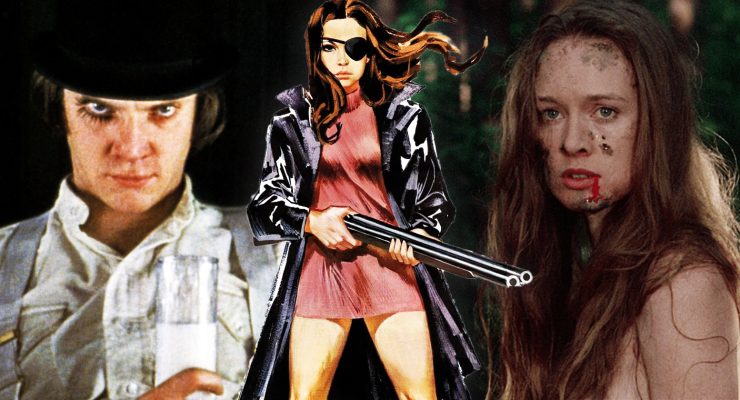With the Director’s Cut arriving on DVD & Blu-Ray for Hercules on December 1, 2014 in the UK, Trevor Hogg chats with Paul Tobin about the concept design work contributed by the Weta Workshop…
Brett Ratner and Dwayne Johnson on-set filming Hercules.“We first got involved with Hercules [2014] back in 2007,” explains Weta Workshop Senior “Designer Paul Tobin. “At the time, Hercules was a Radical Comics character who has appeared in two limited series The Thracian Wars[1] and The Knives of Kush,[2] both written by Steve Moore with Cris Bolsin on art. We were approached to help produce some design and artwork to help pitch the story as a feature film. Fast forward to 2012 and the long held dream of bringing their Hercules to the big screen became a reality and we were invited to once again offer up some design and artwork but this time for production.” Tobin remarks, “We had a number of regular video calls to Brett Ratner [Rush Hour] during the design phase. Initially, it was more about what Brett was looking for in regards to mood and tone and then as we started producing design work he would quickly hone down on ideas he liked. It was a lot of fun as Brett was very open to discussion and ideas that evolved along the way. In regards to Visual Effects Supervisor John Bruno’s [The Abyss] storyboards, the simple answer is absolutely! Specifically the boards involving the creatures like the Hydra, Boar and Nemean Lion. Our creature designers Greg Tozer and Andrew Baker both used these boards to help inform their designs especially in regards to scale and how they would need to perform in action. How well the silhouette may need to read on certain camera angles.”
“Typically Myth has some grounding in history and so for us it was going back to those historical moments and then exploring some more unique designs from there,” remarks Paul Tobin. “For instance with the creatures like the Boar, it was less about coming up with some high fantasy creatures and more about looking at prehistoric boar and taking design inspiration from there. At Weta Workshop we tend to approach weapons and armour design as an extension of culture and character. For example, traditionally Hercules’ club is described as just a wooden club so here the brief became more about how to elevate a wooden club into a ‘demi-god’s’ weapon. I used Hercules’ other main identifying trait [his lion skin] and combined this lion motif into his Hercules club. By adding lions’ claws into the head of the club, the weapon now had a more interesting silhouette and is more meaningful to Hercules as a character.” Visual research was a critical part of creating the armour, swords and spears. “Much of the process was similar to other projects we work on, in that we tend to do a lot of research around the source material before we embark on design. Doing your homework pays off with good ideas and that leads to great designs which have cultural meaning and look cool. The key is the need to create a signature look that helps define the role and look of a character. You don’t want to just copy historical weapons, but grounding them in practicality and appreciating the design of that time period helps. For example, Hercules’ bow was mentioned as a gift from Apollo so, one concept we did had motifs of a raven and laurel leaves which are symbols of Apollo.”
“The Boar, Hydra and Lion were a little more straight-forward from design to final,” notes Paul Tobin. “It was more a case of small changes for the most part. For instance, the Lion needed to be given a more heroic physic and have its musculature more evident in a way that say Frank Frazetta would stylise and amp up the human form for his heroic barbarians. Cerberus was a much harder creature to crack. The initial concept was that there was the fantasy and the reality. Three wolves/dogs that when viewed at a certain angle would read as a single body with three heads and so give birth to the myth. Within the first rounds of design, we were encouraged to push to more of a monster and even explore flames. It was quite a demonic creature that played on the Hades metaphor. Eventually, the Cerberus came back to less of a monster and more of a demonic three headed wolf.”
“In addition to the weaponry, armour and creatures for the film, Designer Gus Hunter also produced a number of production illustrations of key scenes from the script,” reveals Paul Tobin. “These illustrations often explored the duality of scenes between the reality and the more fantasy moments that became the myth behind the man.” The biggest challenge was to trying to be original with familiar subject matter. “We tried to offer something new through thorough research, long discussion with the direction and internal brainstorming here at the Workshop.” Tobin states, “We would just like to thank Brett and our all our friends at Radical Studio for inviting us to work upon such a fun project. It was a real joy working with Brett and one of our highlights of last year.”
Hercules images © 2014 Paramount Pictures and Metro-Goldwyn-Mayer Pictures. All Rights Reserved. Courtesy of Paramount Pictures and Double Negative.
Many thanks to Paul Tobin for taking the time for this interview.
To learn more visit the official websites for Hercules and Weta Workshop plus read the insights of John Bruno at the CGSociety.
Herculean Task: The Third Floor & Hercules
Herculean Task: Cinesite & Hercules
Herculean Task: Milk VFX & Hercules
Herculean Task: Method Studios & Hercules
Herculean Task: Double Negative & Hercules
Trevor Hogg is a freelance video editor and writer who currently resides in Canada.










